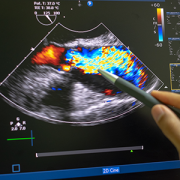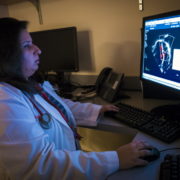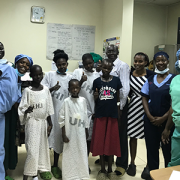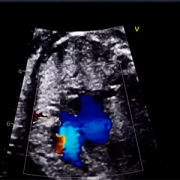Significant health disparities in detection of critical congenital heart disease

Mothers who are Hispanic or who come from rural or low socioeconomic status neighborhoods are less likely to have their child’s critical heart condition diagnosed before birth, according to a new study in the journal Circulation.
Mothers who are Hispanic or who come from rural or low socioeconomic status neighborhoods are less likely to have their child’s critical heart condition diagnosed before birth, according to a new study in the journal Circulation.
This is the largest and most geographically diverse study of these challenges to date. The study compared patient data of more than 1,800 children from the United State and Canada diagnosed with two of the most common, and the most serious, critical congenital heart defects: hypoplastic left heart syndrome (HLHS), when the left side of the heart is not developed completely, and transposition of the great arteries (TGA), when the two main arteries that carry blood away from the heart are reversed.
“The earlier we diagnose a heart defect, especially a serious one such as HLHS or TGA, the sooner we can make a plan for how to safely deliver the infant and reduce the impacts of that heart defect on the rest of the body,” says Anita Krishnan, M.D., first author and cardiologist at Children’s National Hospital. “Early detection and diagnosis of these conditions is crucial to ensuring the best possible outcome for the child, especially in protecting the brain.”
Even when infants’ heart defects were detected before birth, babies from neighborhoods with lower socioeconomic status were detected later in gestation than others.
“The COVID-19 pandemic has brought the idea of significant disparities in health care to the forefront of our national attention,” says Dr. Krishnan. “Even though many health care providers have seen these inequities firsthand in their own clinical experience, it was still surprising to see the strength of the association between socioeconomic position and the care available to mothers.”
In both the United States and Canada, expectant mothers are first screened as part of routine prenatal care in the first trimester for early signs of congenital heart defects and other genetic disorders via blood screen and ultrasound. In the second trimester, a comprehensive ultrasound evaluation for structural anomalies is routine. If any issues are detected, the mother is referred for a fetal echocardiogram and counseling.
The authors suggest that decreased linkages between neighborhoods and people identified in the study and subspecialists could contribute to the disparities found in the study.
“Prenatal detection rates may improve if we are able to leverage outreach and telehealth to strengthen the relationships between these specialties and the groups we identified in the study,” Dr. Krishnan says.
The study included a total of 1,862 patients, including 1,171 patients with HLHS (91.8% prenatally diagnosed) and 691 with TGA (58% prenatally diagnosed). The study group included prenatally diagnosed fetuses with HLHS or TGA and postnatally diagnosed infants less than two months old with HLHS or TGA. Data was collected from institutions participating in the Fetal Heart Society, a non-profit 501(c) multicenter research collaborative with a mission to advance the field of fetal cardiovascular care and science. Mary Donofrio, M.D., director of Prenatal Cardiology at Children’s National, is society president and served as a senior author on this study.
Read the AHA’s press release: Prenatal detection of heart defects lower in rural, poor areas and among Hispanic women.











